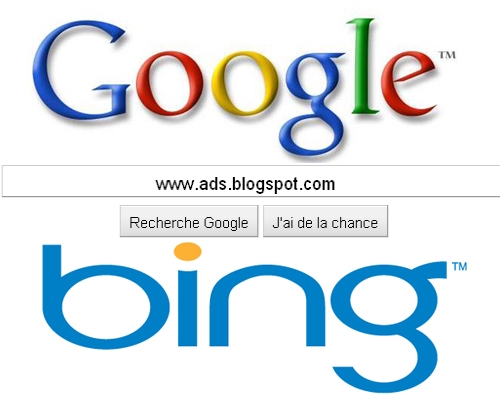
The use of negative keywords to prevent displaying ads for unrelated searches is also the same. Moreover, keyword competition arrangements are also alike. However, there are a lot of factors that set the two search ad networks apart. Let’s get down to the details.
Bing vs Google AdWords
Advantages of Google AdWords
When we think about search ads, our minds naturally go to Google AdWords. Why? Because Google is a search engine giant and holds more market share than all other search engines combined. Our tilt towards Google AdWords translates into huge revenue for the search engine giant because it is more costly than Bing Ads. The reason: the higher the value propositions for advertisers, the higher the price.
It is important to note that Google AdWords has more than a million advertisers, meaning that the competition for the number one ad position on Google is higher than that on Bing Ads.
Search Volume
No doubt, Google boasts a huge and unmatched search volume. If you want to target a specific geographical niche with your search ads, Google AdWords may be your only option where you can take benefit of higher search volume. Higher search volume can translate into more possibilities for your business. Bing has the second highest search volume, but it is still far behind Google.
Google holds 67 percent share of the search market while Bing hold 20 percent. This means that when you use both Bing and Google AdWords as your search ad networks, you are already covering 90 percent of the search market. When you ignore Bing Ads, you actually lose 1/3 of the search market.
Visibility and Ad Extension
Google offers you wider ad extensions and visibility than Bing. Since reaching out to your target market in two lines is challenging for copywriters, ad extensions offer you more flexibility in terms of space for your message. Remember, the broader the ad extensions, the more your visibility.
User Friendliness
Google AdWords is more user friendly than Bing Ads. You can easily create, launch, run and manage your ads on Google AdWords than Bing Ads. Even though search advertising is not much a natural endeavour, yet Google has outshined Bing when it comes to features and user friendliness.
Impression Share
Impression Share is a very important factor in search advertising. Since Google enjoys a huge share of the search market, operating in high-pitched markets also necessitate high Google AdWords budget. And when it comes to Bing Ads, a smaller budget is needed to keep a high Impression Share. In simple words, Bing Ads is a big fish in a small pond.
Cost of Advertising
Advertising on Bing is relatively inexpensive than on Google. On average, Bing Ads are 50 percent less costly than Google AdWords. Bing Ads advertisers are fewer in number, meaning that fewer people are competing for keywords. This ultimately means less cost for advertisers.
Bings’ Strength
Since Bing and Yahoo have teamed up to create their ad network, when you put an ad on Bing Ads, it will also show up on Yahoo. Even though the combined search volume of Bing and Yahoo is far lower than that of Google, yet they can still provide substantial search volume for your search ad campaigns.
Customer Service
Even though Google’s customer service is supreme, Bing’s is not bad either. Whenever you face a problem with Bing Ads, Bing’s customer service officers would reach out to you and help solve the problem. This can mean a lot to small businesses that may not be aware of the dark side of search advertising.
Shoping Ads
Both Bing and Google Shopping Ads offer a great opportunity for E-commerce retailers. Both entworks provide advertiser simple ways to match search queries with product offerings. However, Google goes a step further to offer you a opportunity to put your product images easily inside ads and redirects clicks on your shopping ads directly to your product pages on your website.
Display
There are a lot of similarities between Bing Ads and Google AdWords when it comes to display. However, there are also a lot of differences between the two.
- Google AdWords offers you image ad option, but Bing Doesn’t.
- With Bing ads, you can either use keywords or managed placements for targeting.
- With Bing, you are restricted to see only domain level placements. On the other hand, Google AdWords reports page URLs.
- Google AdWords offers you contextual keywords matching, but Bing doesn’t.
- With Google AdWords, you can use the user data to do interest-based targeting.
- Google AdWords gives you the option of remarketing, whereby you can target Google users on the basis of their visit to your web pages.
- With Google AdWords, you can also promote YouTube videos on Google Ads Network.
Location Targeting
Even though Bing Ads competes head to head with Google AdWords, but when it comes to location targeting, Bing loses. With Google AdWords, you get the options to target users in a specific area, uneven regions, particular cities or countries. Bing Ads falls short on this feature. However, rumors suggest that the ads network is working in this area and we’d (hopefully) see this option pop up sooner or later.
Ad Text Length
With Google AdWords, you get two-line description of 71 characters for your ad copy. With Bing, you can write a copy of 71 characters in one line. That might not seem a great deal, but you need to write your copy carefully. Remember, one line can make the difference and convey your message in a different way. Both networks support 25-character headlines for you ad title.
Control
Bing Ads offer you more control when it comes to manage the campaign or ad groups. You can easily assign different time zones to different campaigns in Bing Ads. In other words, Bing has made the complex ad time setting methods easier for you. This option can be specifically helpful when you are trying to run international campaigns.
On the other hand, Google AdWords lets you select your network, geographical parameters, ad timing, ad language and ad rotation for each campaign, but not for ad groups. Bing wins here because it lets you set the features at the ad group level.
Device Targeting
In 2013, Google faced a backlash from search advertisers when it migrated to enhanced campaigns, forcing all campaigns to target all devices, including mobile devices. Even though Google AdWords users can somehow regulate their bids for mobiles, yet they are not in control when it comes to tablets. The bad news is that you cannot even skip desktop search targeting because it is there by default.
When it comes to Bing Ads, you can remove desktop and tablet targeting from your campaigns. The company has planned to withdraw a number of targeting options in future. The good news is that you can even select your targets on the basis of the operating systems of their mobile devices.
Transparency
Google AdWords offers you two options when it comes to campaigns:
1. Target Google search
2. Target Google search and search partners
You don’t get any other option with Google AdWords except the two listed above. It doesn’t let you find a specific search partner, and you can’t see which of the partner search engines is sending traffic to your website.
However, when it comes to Bing Ads, you get the following options at the ad group level:
- Target Bing and Yahoo
- Search a specific partners and target
- Select Bing, Yahoo and other partners for targeting
The good news is that with Bing Ads, you can see the partners sending traffic to your website. Moreover, you can remove partners that don’t send traffic to your site.
Close Variants
Bing does offer you close variant keywords, but unlike Google AdWords, Bing Ads doesn’t force them on you. In simple words, the close variants in Bing are just an option, not an obligation. You can easily remove them at the ad group or campaign level.
Social Extensions
When it comes to social extensions, Bing Ads is a winner. Bing started playing with automated social extensions two years ago by displaying the number of your Twitter followers alongside your ad. Since than, Bing Ads has introduced a lot of innovations to its social extensions.
Demographics
Bing Ads gives you more control over demographic targeting than Google AdWords. Remember, Google leaves advertisers in the dark when it comes to target by demographic factors. With Bing Ads, you can select demographic factors like gender and age of your targets. You can control the demographic factors both at the campaign and ad group levels.
Google Analytics integration
Google AdWords has an innate relation with Google Analytics. When you enable the auto-tagging option in Google AdWords ads, you can easily view and examine your ad performance in Google Analytics. But when it comes to Bing, you are required to first develop custom parameters, so it can imitate Google AdWords’ auto integration with Google analytics. The good news is that it will take you little time to develop the parameters and setup the integration.
Bing Ads-IE relationship
Because the same company, Microsoft, owns Bing Ads and Internet Explorer, the two have very natural relationship. And by default, Bing is the search engine for IE. It may not appear like a big deal, but when we look at the demographics of browsers, IE is extremely popular among people aged 45 and above. It is worth giving Bing Ads a shot if you want cover all demographics.
Budgets and Payment Options
In Google AdWords, you get only daily budget option to get your campaign started. On the other hands, Bing Ads offers you more options, including daily and monthly budgets. Bing Ads also gives you the option to pay via PayPal. You can easily add a PayPal account in your Bing Ads accounts and billing section. But with Google AdWords, you don’t get the option to use PayPal as a payment method.
Who Wins?
Both Bing Ads and Google AdWords have their own, exclusive characteristics. Normally, it is judicious to use both ad networks. However, if your budget is limited or if competition is your major concern, then go for Bing Ads because it offers you more flexibility and options in terms of cost and competition.
If you want to reach out to the mass market, and if cost is not your concern, go for Google AdWords; however, it is best to use both networks. Google AdWords continues to be the preferred platform for most advertisers, thanks to its flexibility and high search volume.
About The Author
Khalid Essam
Khalid is the Chief of Staff at AOK. He collaborates with a team of specialists to develop and implement successful digital campaigns, ensuring strategic alignment and optimal results. With strong leadership skills and a passion for innovation, Khalid drives AOK’s success by staying ahead of industry trends and fostering strong client and team relationships.






